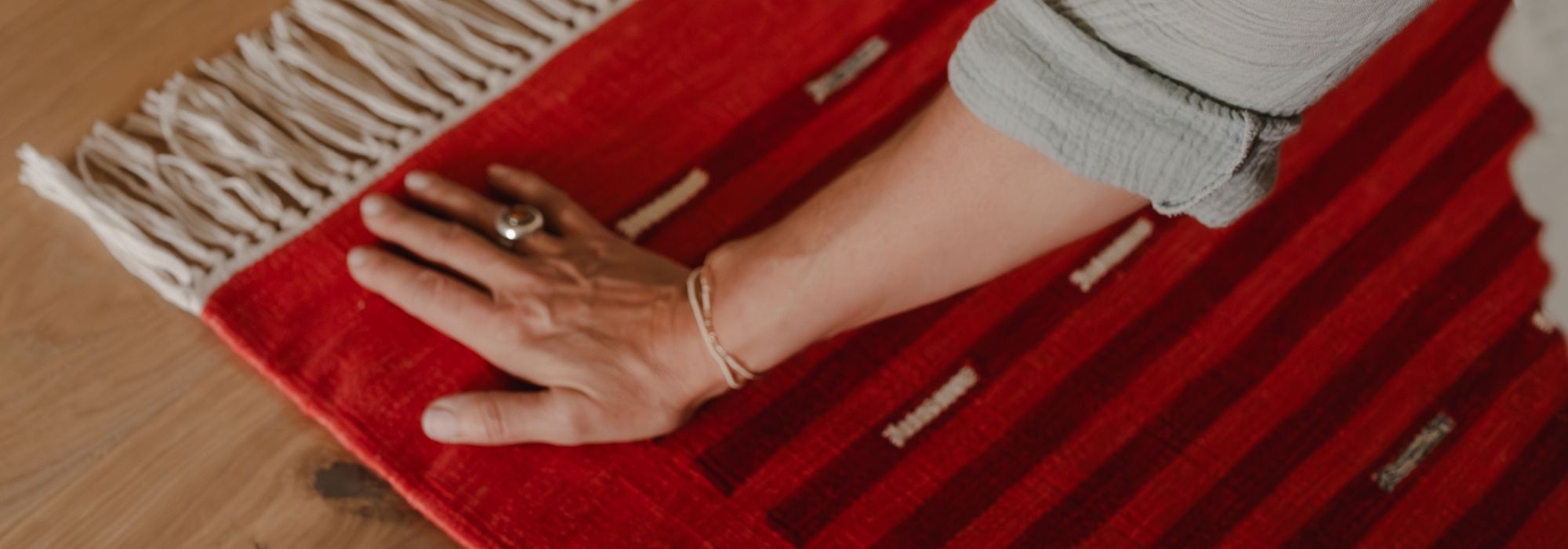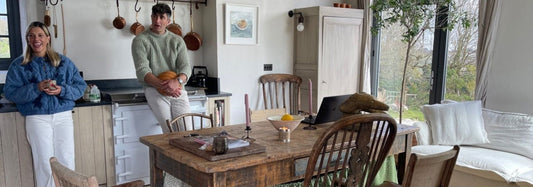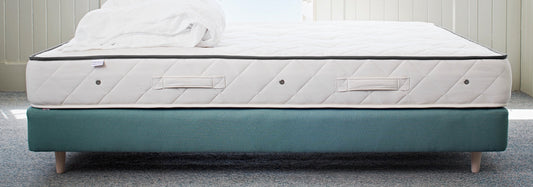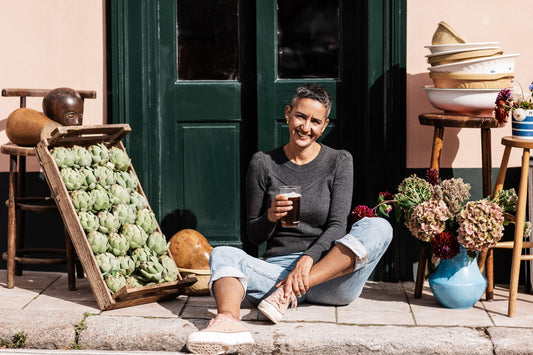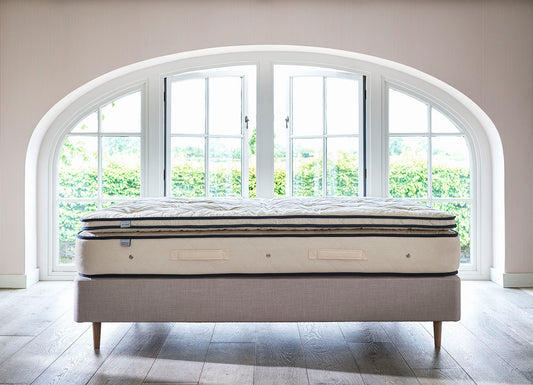We love shining a light on like-minded brands that are reimagining how beautiful design and sustainable thinking can go hand in hand, so we caught up with Tasha, the inspiring founder of Weaver Green – a Devon-based company turning discarded plastic bottles into soft, durable textiles that look and feel just like wool. From a moment of inspiration on a Turkish harbour wall to a seven-year journey perfecting their unique recycled yarn, their story is one of creativity, innovation, and a deep commitment to both people and planet. Read on to discover how they’re helping preserve traditional weaving skills, reduce plastic waste, and make sustainable living feel a little more stylish.
What inspired you to start Weaver Green?
We were sitting on a harbour wall in South East Turkey, watching the fishing boats flow in and out, and spotted a brilliant bit of innovation where a number of plastic bottles had been cut into curly strips, ends melted together then plaited to create a kind of rope... something about seeing what had once been a hard, moulded structure (the plastic bottle) turned into a fluid rope-like material really clicked, and started our journey to create a wonder yarn that was both entirely recycled and entirely (and easily) recyclable. It was essential to me that the yarn feels natural to the touch, like wool, cotton or jute, and that development took us seven years - I am so proud of the result.

How are Weaver Green products made? What makes them so unique?
We are a small family owned business, and have always looked to work with passionate, independent partners with our product development. My favourite collaboration so far has been with our incredible Kilim weavers, generational artisans that have passed the intricate skill of weaving beautiful hand loomed Kilim rugs from generation to generation. With the advent of cheap machine woven rugs, mass production of cheap imitations, many of these weaving families were leaving the trade, and there was a genuine risk of losing the incredible artistry and skill of traditional Kilim weaving... we have run projects from our inception to really celebrate and elevate the hand loom Kilim designs within our rug range. They are absolutely my favourite Weaver Green products and the intricacy and antique look and feel of our new Silk Road range is astonishing. Look at the Aster Rug, for example. I love how the combination of innovation in materials and generationally learnt artistry can result in such a brilliant and beautiful product.

How is Weaver Green implementing its commitment to sustainability?
We clearly aren't going to be able to solve the waste plastic problems alone, so, as with all issues with global warming and environmental damage, you just have to do your bit! We decided from the beginning that we should design our entire manufacturing process for our yarn around the principles of leaving a light footprint on the environment - we pioneered a mono material process that uses only PET plastic, allowing us to not only make our Weaver Green rugs and textiles from entirely recycled single use plastic, but also means all our products are completely and easily recyclable with no material separation needed when they have finished their useful life as a Weaver Green rug or product. We developed a closed water system in our yarn process, which means we use a tiny quantity of water to produce our yarn compared to conventional textiles manufacturing, and have almost zero emissions of waste water, constantly reusing and cleaning/recycling our water.
When we first started, we were the only company who were really taking plastic bottles and focusing only on turning that waste material into beautiful, useful and fully recyclable textiles. We're really proud of what we've achieved, and I love it when people first meet one of our rugs and can't believe it's not made from wool - if we can do it , surely the big players in textile brands can too? We need more responsible manufacturing, and legislation incentives to instigate change.
Why aren't washing machine companies putting micro plastic filters in washing machines at point of manufacture? Such a simple thing to do...

Being based in the South West, how has Weaver Green given back to its local community?
Being based in Devon has shaped so much of who we are. We’ve built a brilliant local team over the years and created a working culture that really reflects our values – supportive, creative and rooted in the community around us.
We also work closely with local independents and support environmental projects in the area. For the past few years, we’ve been working with the Avon Valley Project – an ambitious Devon Wildlife Trust initiative that’s restoring and reconnecting one of the South West’s most precious wildlife habitats. It’s all about bringing back native species and protecting this special landscape for the future.
You can watch a short film about the project here.

What tips can you give to people looking to create a stylish & sustainable home?
For me, it's all about our incredible Kilim rugs… the skill and artisanal craftsmanship of these handloomed rugs is inspiring. With the constant pressure on weavers to make products cheaper, we are at a real risk of losing the generational craftsmanship of hand loom Kilim weaving, so this category has been a real focus for me as a designer to champion. They are also beautiful, soft underfoot and incredibly hardwearing, and you really wouldn’t believe that they are not made from fine wool. They look great in a boho garden scheme, and everything can be left outside without going mouldy or perishing under the sunlight. As needed you can put all our products in a 40 degree machine wash to freshen them up and clean deep rooted dirt or house/garden detritus. I particularly love our new Aster and Samarkand rugs and have just swapped my own house around to accommodate them in my living room, porch and snug.


